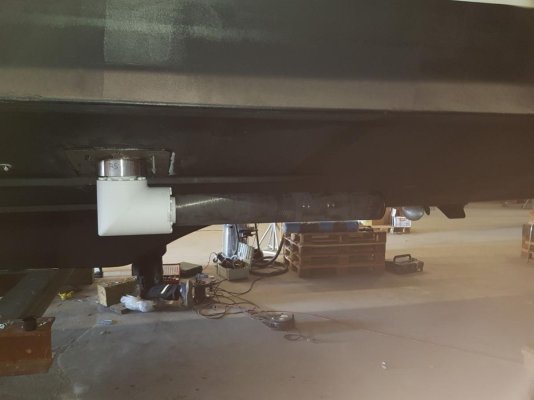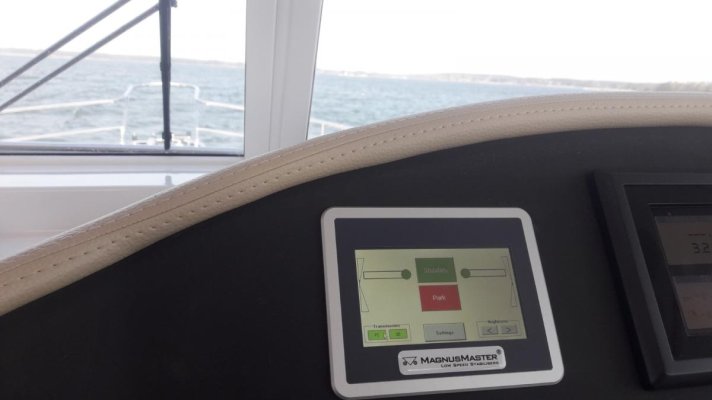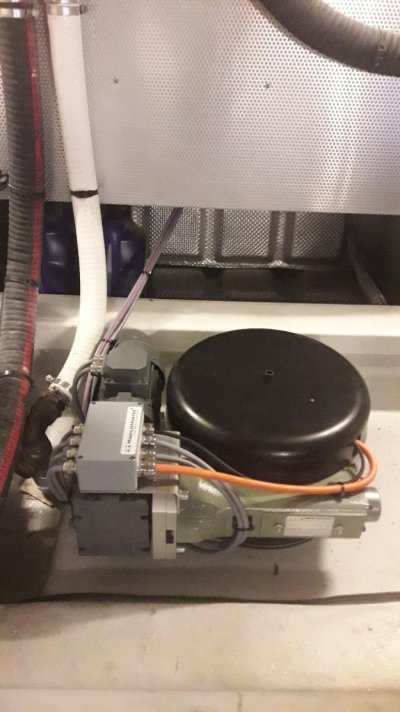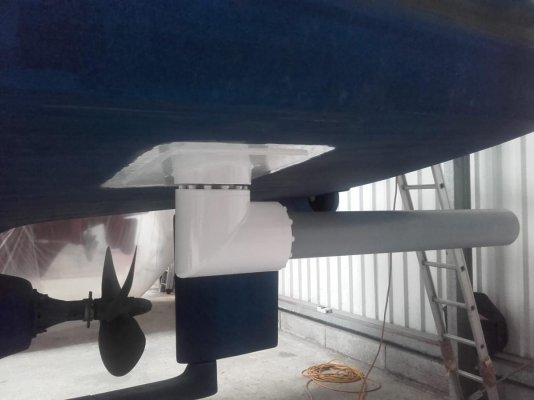Mr. Blu
Senior Member
- Joined
- Jun 11, 2017
- Messages
- 147
- Location
- The Netherlands
- Vessel Name
- Mr. Blu
- Vessel Make
- Beneteau Swift Trawler 52
Hi all,
As you perhaps know I am already looking quiet some time for a stabilizer system which I could have built in my ST 52. I have considered the MC Quick system, a gyro system which had the advantage that it is very compact, I looked at several fin systems from Naiad and others, but they were all very vulnerable to my opinion and I also considered the Seakeeper but that has to my opinion the disadvantage of slow starting and a long time running after shutting off. And it would take to much space in the first place.
But the main problem, building these systems in a second hand motoryacht is that you will have to sacrifice a lot of space and even sacrifice things like a watermaker. And also the costs for adjusting a GRP motoryacht, -making necessary enforcements and adjustments- are very high in comparison to building a system in a new motoryacht. And you can only spend a dollar or euro once.
The best way is to have a new ship built and get all the options that you want. But I like my ST 52 very much and it meets to most of my wishes. So I left idea of the project “Stabilisers” for what it was for some time.
However recently I found an article on the internet about a Swedish shipyard which had built in a so called Magnus system in a Beneteau Swift Trawler 52. It does not use fins but a kind of spinning tubes, which use the so called Magnus effect to stabilize the ship. These tubes are retractable so when they are not used these tubes are folded along the hull.
The system works at speeds up to 12 knots. At anchor (zero speed) it does not have any effect. Although the ST’s are capable of going much faster we do not use (as most forum members do) our ST as fast going motoryacht.
Interesting for me in the article was that the owner of the shipyard pointed out that to his opinion there was a large market for refitting ST 52 with this system. It had not been a one of a kind job.
Also were interesting the photo’s of the installation of the system in the engine room. It takes little room and to my humble opinion it can be built in rather easy.
I went to Boot Düsseldorf (Europe's largest indoor boat show) where the manufacturer (a Dutch company to my surprise) demonstrated the system. It was so impressive that I ordered a system for my ST 52. It will be built in in April or March.
I think that also for smaller ST the system will fit.
I add some photo’s of the Swedish guy where you can see for yourself. Of course I will make lot’s of pictures when the system is build in my ST but that will only be in a few months. My ST is at the moment in Croatia and has to come to the Netherlands first. But that is another story.
As you perhaps know I am already looking quiet some time for a stabilizer system which I could have built in my ST 52. I have considered the MC Quick system, a gyro system which had the advantage that it is very compact, I looked at several fin systems from Naiad and others, but they were all very vulnerable to my opinion and I also considered the Seakeeper but that has to my opinion the disadvantage of slow starting and a long time running after shutting off. And it would take to much space in the first place.
But the main problem, building these systems in a second hand motoryacht is that you will have to sacrifice a lot of space and even sacrifice things like a watermaker. And also the costs for adjusting a GRP motoryacht, -making necessary enforcements and adjustments- are very high in comparison to building a system in a new motoryacht. And you can only spend a dollar or euro once.

The best way is to have a new ship built and get all the options that you want. But I like my ST 52 very much and it meets to most of my wishes. So I left idea of the project “Stabilisers” for what it was for some time.
However recently I found an article on the internet about a Swedish shipyard which had built in a so called Magnus system in a Beneteau Swift Trawler 52. It does not use fins but a kind of spinning tubes, which use the so called Magnus effect to stabilize the ship. These tubes are retractable so when they are not used these tubes are folded along the hull.
The system works at speeds up to 12 knots. At anchor (zero speed) it does not have any effect. Although the ST’s are capable of going much faster we do not use (as most forum members do) our ST as fast going motoryacht.
Interesting for me in the article was that the owner of the shipyard pointed out that to his opinion there was a large market for refitting ST 52 with this system. It had not been a one of a kind job.
Also were interesting the photo’s of the installation of the system in the engine room. It takes little room and to my humble opinion it can be built in rather easy.
I went to Boot Düsseldorf (Europe's largest indoor boat show) where the manufacturer (a Dutch company to my surprise) demonstrated the system. It was so impressive that I ordered a system for my ST 52. It will be built in in April or March.
I think that also for smaller ST the system will fit.
I add some photo’s of the Swedish guy where you can see for yourself. Of course I will make lot’s of pictures when the system is build in my ST but that will only be in a few months. My ST is at the moment in Croatia and has to come to the Netherlands first. But that is another story.
Last edited:








